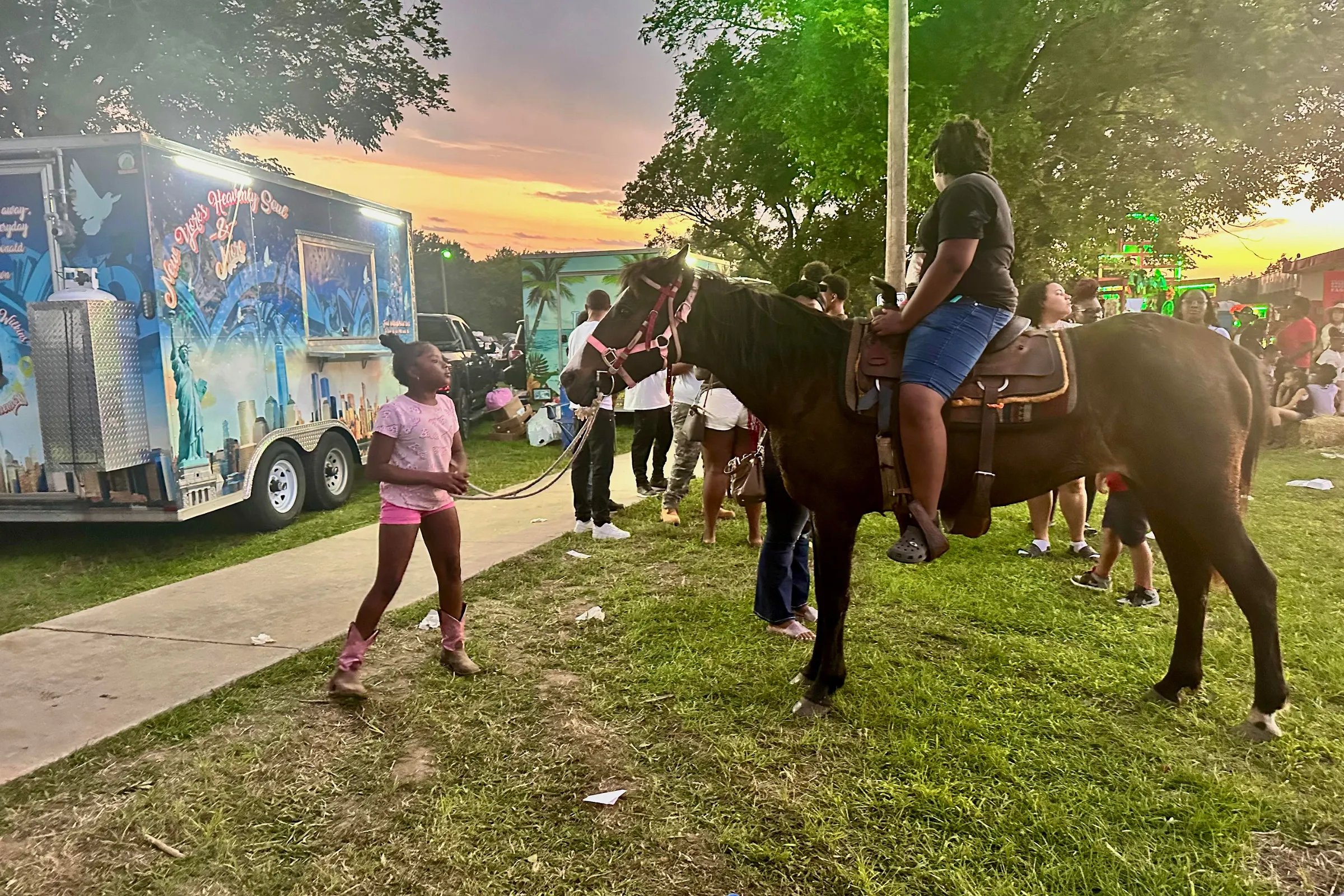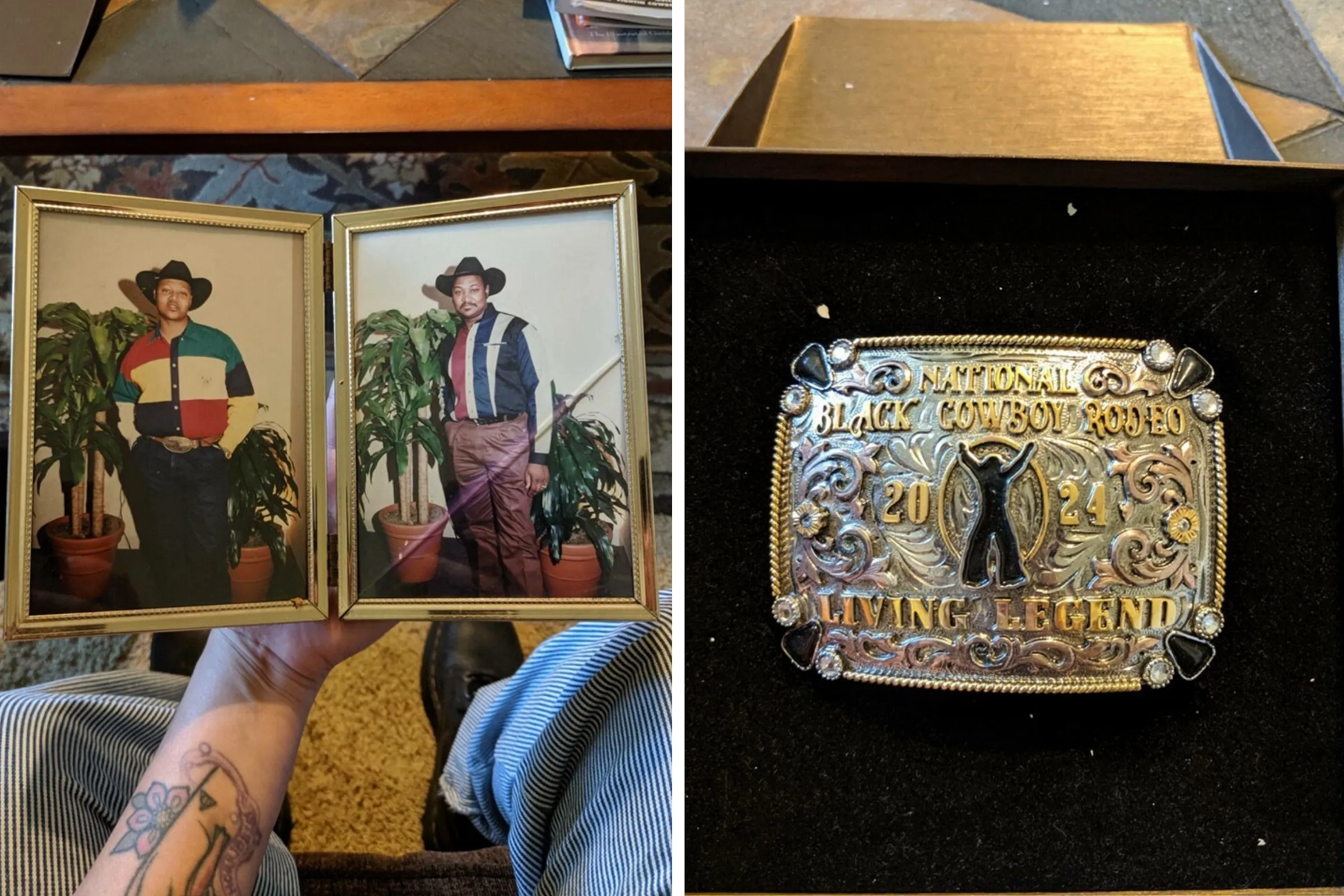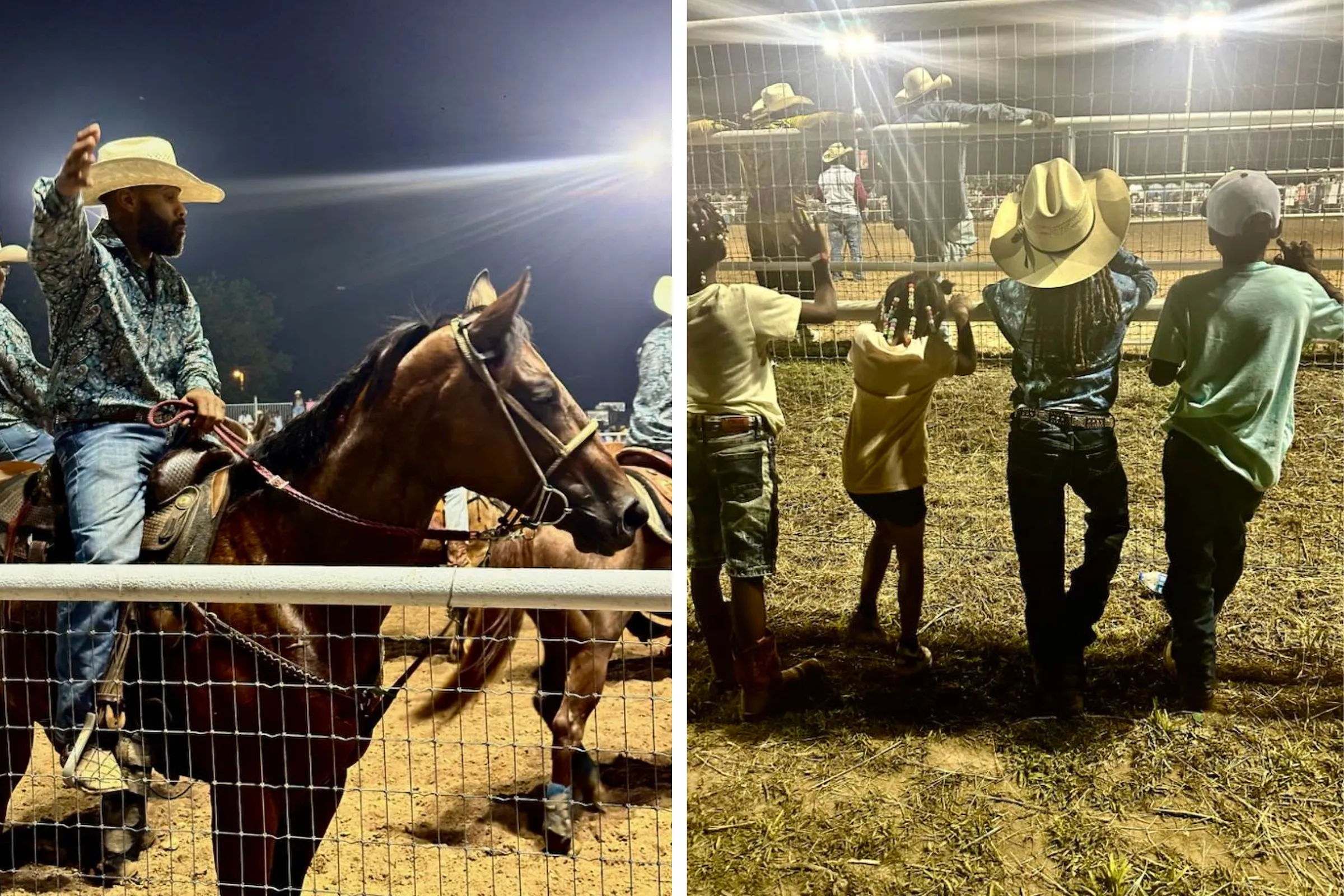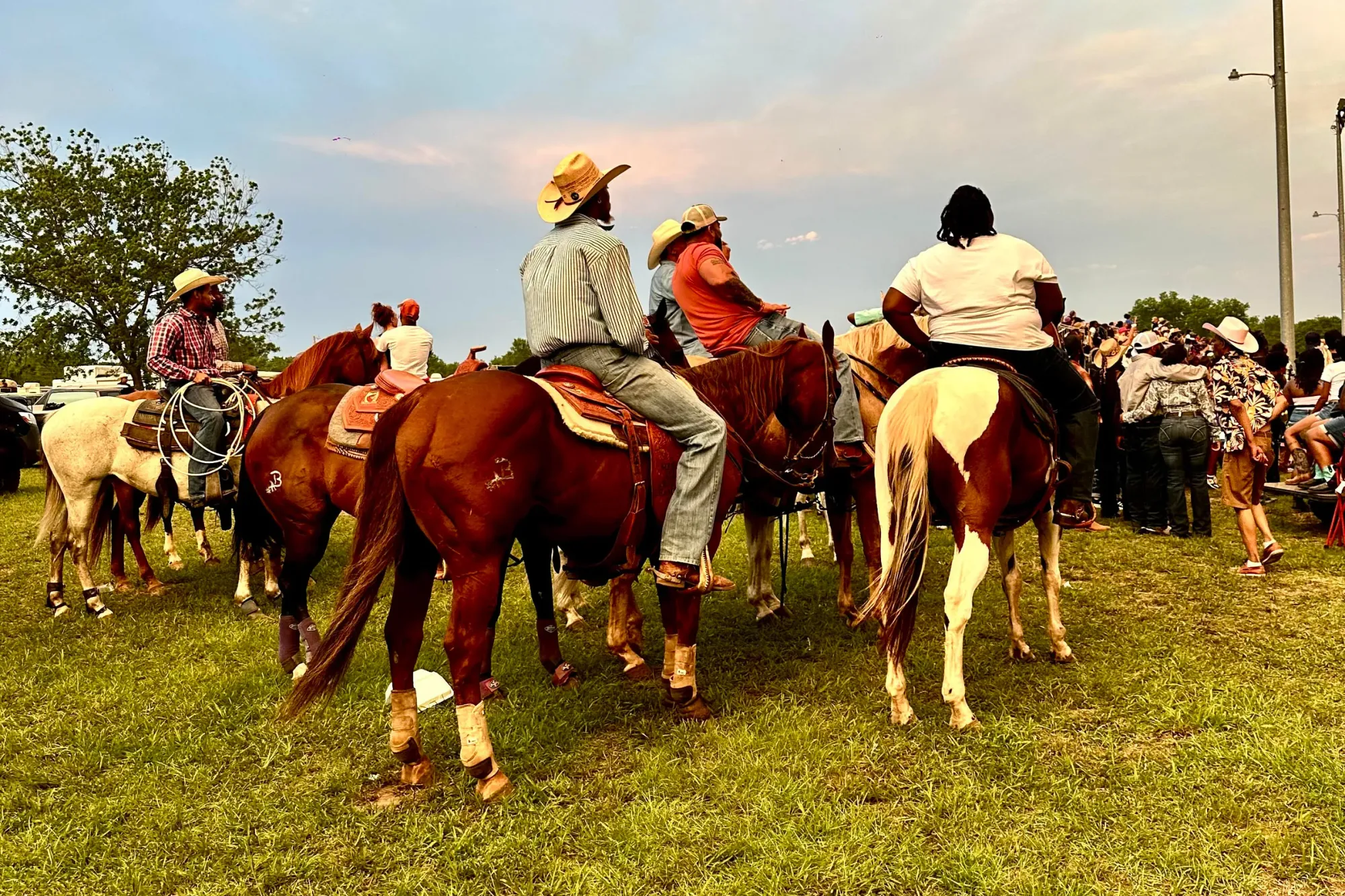121st Annual Boley Rodeo
Boley, OK
May 25, 2024
Next weekend, Tulsa Tough will attract thousands of visitors to our city. Throngs of out-of-state and out-of-country travelers will revel in our annual extolling of bicycles and bacchanalia. But an hour southwest of us, the town of Boley turns up just as fiercely.
Just west of Woody Guthrie’s Okemah birthplace, you knew you’d found Boley on May 25 by the miles-long swaths of parked cars, trucks and horse trailers on Highway 62. The vehicles — seemingly abandoned a la The Last Of Us—went all the way up Main Street, where the first sign of life was a man popping a wheelie on a dirt bike over the entirety of the downhill thoroughfare. Donks, high riders and low riders began to pepper the assortment of wheels, with subwoofers and charcoal grills heralding your proximity to the function.
And there was indeed a function.
Just as somehow the sea of near-nude Cry Baby Hill attendees conceals an actual bicycle race, the epicenter of Boley’s tailgate party contained the 121st Annual Boley Rodeo.
Boley is on the historic registry of All-Black Oklahoma Towns, and the Boley rodeo has been ground zero for Okie Black rodeo culture since 1903. For more than a century, the town of 1,000 citizens has exponentially ballooned its census on Memorial Day weekend. In a News 9 interview from last year, Boley town historian Henrietta Hicks said one year saw 50,000 people attend.
The 2024 installment was no exception, with the minimal stadium seating full for the duration, with onlookers commandeering hay bales, fences and chutes for clear vantage points. The best view was property of the many kids I saw riding horses into the crowd and looming above their non-equestrian peers.

As an historic All-Black Town, Boley has also been a cultural touchstone for Black rodeo nationwide, which is having a mainstream spotlight turned its way with the release of Cowboy Carter and recent NPR spots highlighting this rich scene, of which a majority of white people have been ignorant.
Seeing as I am whiter than the devil himself, I turned to Tulsa comedian, Focus Black Oklahoma contributor and Black cowboy Chaz Stephens, aka Thunderwof, for his perspective on the event. He participated in the Boley Rodeo’s barrel races in his youth and is well acquainted with the competition-slash-party. But for the real scoop, he invited me to his family ranch in North Tulsa to meet “The Prototype”: his father.
There isn’t enough space here to give justice to the importance of Ronald Stephens, or the general badassery of him and his twin brother, Donald. A greatest hits for the pair sees them acknowledged as “Legends” by Professional Bull Riders, Inc., and getting film roles on horseback in the Young Guns and Return of the Desperado series, among other cowboy achievements.
But Ron told me their road to legend status in the Black rodeo world started in Boley.

Sons of a farm-owning firefighter, the young Stephens twins had ample time to learn the ins and outs of calf roping, barrel racing and relays. Their father saw the sports as nothing more than gambling, with entry fees being put up for a slim chance to jackpot. And early encounters in white-run rodeos had them gambling with their time and safety.
The pair won several white-run rodeos in the ‘80s and ‘90s, and on several instances the organizers refused to pay them, on account of their race.
But the All-Black Town of Boley gave them a fair and welcome place to compete, and their first jackpot of upwards of $1,000 made their father take their ambitions more seriously. The Stephens brothers paid forward their good fortune by founding D&R Western Heritage Rodeo Education, training a new generation of Black rodeo legends at their North Tulsa ranch.

Some of those cowboys competed in Boley this Memorial Day weekend, with the sounds of hip hop and R&B blasting from the announcer booth, occasionally resulting in arena-wide sing-alongs. Jerk smoked chicken wings took the place of usual concession stand fare, with BBQ and soul food trucks dotting the periphery.
And the crowd wasn’t just there to party.
Every person singing and waving their phone flashlight was intently focused on the games, evidenced by the cheers and audible gasps whenever a rider was thrown from their horse or crossed the finish line.
A standout feature among the excellent food, dancing and impeccable western style on exhibit was the youth presence. One young man had a pet lemur he was happily lending to photo ops. But the vast majority were either in the crowd or on horseback in the arena: a new generation carrying the Boley Rodeo flame.







